Booming Berlin: Artsy Sightseeing at Its Best
This post may contain affiliate links to products or services I'm happy to recommend. If you click on an affiliate link and then make a purchase, Artsy Traveler may earn a small commission at no cost to you. Thank you!
Berlin is an artsy sightseer’s candy store. If you love museums, you’ll love Berlin. It’s worth at least three full days of your sightseeing time. If you have more time, you’ll find lots more to do and see. It’s a big city with a whole lotta history. We spent a week in Berlin when Gregg had an exhibition there and didn’t come close to seeing everything we wanted to.
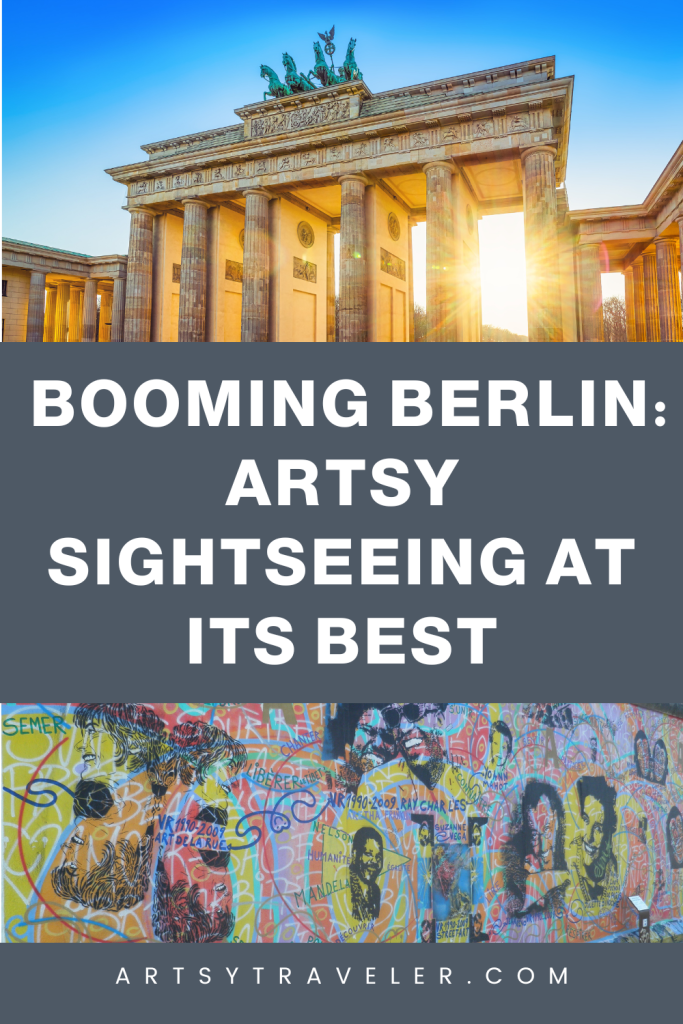
Following are the highlights I recommend in Berlin. To help you plan your time, I’ve grouped the sites in geographical order, moving from western Berlin through the historic core and Museum Island in eastern Berlin to the Kreuzberg neighborhood in south Berlin (where we stayed) and the fantastic Jewish museum.
Getting Around Berlin
Make use of Berlin’s efficient subway system. The city is spread out, and distances between the places you’ll want to see require a lot of walking. Save your legs for touring the museums! For information about transit in Berlin, see the Official Website of Berlin.
Western Berlin
The two major sites we enjoyed in the former West Berlin are the relaxing Tiergarten and the Kulturforum near Potsdamer Platz.
Tiergarten
Chill out in the fabulous Tiergarten, Berlin’s massive central park that stretches from the Brandenburg Gate to the Berlin Zoological Garden. We spent the better part of a day there strolling the pathways and enjoying brunch overlooking a lake. From the Tiergarten, you can’t miss the Victory Column, built in 1864. Climb it to enjoy a panoramic view over Berlin.
Potsdamer Platz and Kulturforum
Check out the modern skyscrapers and shopping malls in Potsdamer Platz, then walk over to the Kulturforum where you’ll find a complex that includes the Gemäldegalerie and the Philharmonie Berlin.
In the complex, you’ll also find the Musical Instruments Museum (Musikinstrumenten Museum) and the Museum of Decorative Arts (Kunstgewerbemuseum), touted as Berlin’s version of the Victoria & Albert Museum in London. Head here if you’re a fan of the applied arts. The collection of women’s fashions over the centuries is especially good.
Gemäldegalerie
An impressive number of European masters grace the walls of this wonderful art museum. The sleek, modern building houses works by Rembrandt, Dürer, Brueghel, Rubens, and Vermeer along with Italian masterpieces by Giotto, Botticelli, and Caravaggio. On the Gemäldegalerie website, take a virtual tour of several of the main galleries.
Allocate a morning to enjoying the collection at the Gemäldegalerie.
Philharmonie Berlin
The magnificent home of the Berlin Philharmonic (Berlin Philharmoniker) will take your breath away. With its unusual tent-like shape and bright yellow color, the concert hall has been a landmark in Berlin since 1963, well before the fall of the Berlin Wall.
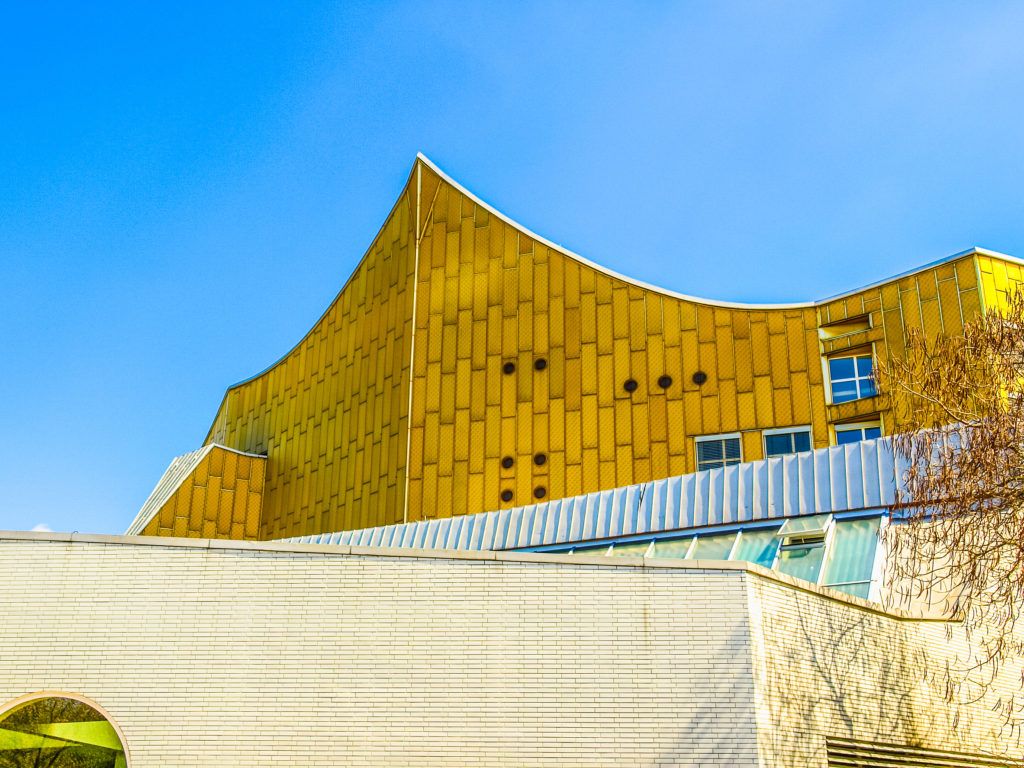
We scored tickets to Stravinsky’s Rite of Spring performed by the Deutsches Symphonie Orchester Berlin. The orchestra’s concerts are less expensive than concerts featuring the Berlin Philharmonic, and the quality was fantastic. Hearing Stravinsky played in the iconic hall was a special experience.
Check event listings for the dates you’ll be in Berlin and consider getting tickets to a concert at the Philharmonie Berlin.
If you’re not able to see a performance, try to find time for a guided tour of the Philharmonie Berlin. One-hour tours are offered daily at 1:30 pm except during July and August and several days at Christmas. The tours are conducted in German and English.
Historic Core of Berlin
When you arrive in Berlin, make your first stop the area around the iconic Brandenburg Gate at the entrance to the Tiergarten. An 18th-century neoclassical monument built by Frederick William II, the gate once stood forlornly in no-man’s land between East and West Berlin.
Reichstag
The big-ticket site in Berlin is the Reichstag (Bundestag), Germany’s historic parliament buildings. Also located in no-man’s land between East and West Berlin throughout the Cold War, the Reichstag was rebuilt in 1999. With its glass dome dominating the skyline, the Bundestag has become a symbol of a unified Germany.
Entrance is free but you’ll need to make a reservation at www.bundestag.de. Be sure to get tickets well in advance or you may be out of luck. You’ll need to show your passport to pass through security.
Brandenburg Gate
Walk through the Brandenburg Gate—something you couldn’t do until the fall of the Berlin Wall in 1989. The weight of history hangs heavy over the gate. Stand in front of it and realize that armies from Napoleon to Hitler have marched through its massive archway.
Now it’s a selfie stop.
Memorial to the Murdered Jews of Europe
Walk into this labyrinth of 2,711 pillars of different sizes. The sobering—and gigantic—memorial to the six million Jews executed by the Nazis is a center of calm in the middle of bustling Berlin. In the Information Center, a continuously running soundtrack recites the names of known victims.
Regrettably, the memorial attracts more than its share of selfie sticks with people posing against the pillars and even climbing and jumping on them.
Go directly into the memorial to get away from the photography mayhem at the peripheries and to experience the dislocation and fear that inevitably arises when you try to find your way out again.
Unter Den Linden
The Unter Den Linden is the Champs-Élysées of Berlin. Stroll down it from the Brandenburg Gate and stop to sample a currywurst at one of the many kiosks in the center strip. A currywurst is Berlin street food consisting of a fried pork sausage (Bratwurst) cut into bite-sized chunks and seasoned with curry ketchup. Eat it with French fries. Fortunately, you’ll walk off the calories pretty quickly.

I’ve tried currywurst once, and I’m good now. It’s an acquired taste, but when in Berlin…
Ampelmänn Stores in Berlin
At the corner of Unter den Linden and Friedrichstrasse—another main drag—you’ll find the flagship Ampelmänn shop.
This place ranks high on my list of favorite souvenir stores. The entire store is devoted to selling products inspired by the iconic Ampelmännchen pedestrian crossing symbols.
You’ll always know when you’re in a neighborhood that was once part of East Berlin because you’ll see Ampelmänn on the illuminated pedestrian signals. The green striding one tells you to Go, and the red standing one tells you to Stop. Both Ampelmännchen wear jaunty, flat-topped hats.
I don’t know why, but I fell in love with Ampelmänn and even bought a plastic one for my keychain.
Here are a few Ampelmänn souvenirs available on Amazon. You can find more on the Ampelmänn store website.
Berlin has several Ampelmänn shops. Search for Ampelmänn on Google maps and you might find one near your hotel. At the very least, treat yourself to a tea towel!
Museum Island
Keep walking down the Unter den Linden and you’ll eventually arrive at Museum Island, home to five world-class museums.
You could spend days, weeks even, exploring the museums here. Each historic museum building was built under a different Prussian king, with the whole site declared a UNESCO World Heritage site.
I recommend visiting Museum Island over two days. You can’t see all five museums in a day without completely wearing yourself out, so don’t even try!
Neues Museum
Of the five, my favorite is the Neues Museum, where you’ll find the bust of Nefertiti along with several floors of treasures from the prehistoric, Egyptian, and classical antiquities eras. The displays on Floor 3 are awesome. Here you’ll find the artifacts from the Stone Age, Bronze Age, and other cultures of the pre-Roman Iron Age.
All the displays are well described in English. You could spend days in this one museum alone.
Pergamon Museum
The Pergamon Museum draws the crowds because of its jaw-dropping buildings from ancient Babylonia, Assyria, and the Islamic world. Unfortunately, you won’t see the enormous Pergamon Altar until 2025, but exhibits such as the Ishtar Gate (46 feet tall and 100 feet wide), the grandest of Babylon’s gates built during the time of Nebuchadnezzar, are worth the price of admission.
Alte Nationalgalerie
The Old National Gallery is the place to see German art, including the work of David Caspar Friedrich which pretty much sums up Romanticism. Check out his craggy mountains, bare-limbed trees, and swirling clouds that celebrate nature in the raw.
The gallery also includes works by French and German Impressionists.
Bode & Alte Museums
These two museums will appeal to connoisseurs of Byzantine art, historic coins, ecclesiastical art (Bode), and other classical antiquities from Etruscan, Greek, and Roman times.
If your time is limited, go to the Neues Museum and the Pergamon Museum on separate days, with one day split with the German History Museum
The museums on Museum Island are pricey. Consider purchasing the 3-day Museum Pass Berlin for €29 to gain entrance to just about every museum you’ll want to see in Berlin. See below.
Other Museums in the Historic Core
Deutsches Historisches Museum
Not far from Museum Island is this massive museum which presents 2,000+ years of German history. Over 7,000 exhibits take you from the early Middle Ages to the present day.
It’s another exhausting experience so pace yourself!
DDR Museum
I enjoyed this museum which shows what life was like in communist East Germany—the DDR (Deutsche Demokratische Republik).
Many kitschy items are on display, including the reconstruction of a typical home from the period, complete with drawers and cupboards that you’re encouraged to open and rifle through.
Buy your tickets for this popular museum in advance to avoid long lines.
Spree River Cruise
On the river not far from the DDR Museum and behind Berlin Cathedral, hop onto a Spree River Cruise. For a relaxing hour, you’ll listen to an English audio guide and enjoy a riverside view of amazingly nifty modern architecture in the former West Berlin.
You can get off at the Tiergarten, like we did, for some quality nature time – or stay on the boat until it turns around and returns to the dock.
Buy tickets at the dock or online before you go.
South Berlin
Two museums we enjoyed in this area of Berlin, near where we stayed in Kreuzberg in south Berlin, are the Asisi Panorama of the Wall at Checkpoint Charlie and the Jewish Museum.
Checkpoint Charlie
You can’t miss Checkpoint Charlie, with its costumed guards and legions of tourists snapping pictures. In the souvenir shops on both sides of the street, you’ll find Soviet army hats and other kitschy memorabilia of the Cold War. The area is kind of a DDR Disneyland.
Between 1961 and 1989, Checkpoint Charlie, located in the middle of Friedrichstrasse, was one of the few places where people could legally pass between East Berlin and West Berlin. The giant back-to-back photographs of two young soldiers dominate the area.
Facing east, the photograph shows a young Soviet soldier (see below). Facing west, the photograph shows a young American soldier. The disconnect represented by the photograph remains a salutary warning that the Cold War wasn’t that long ago.
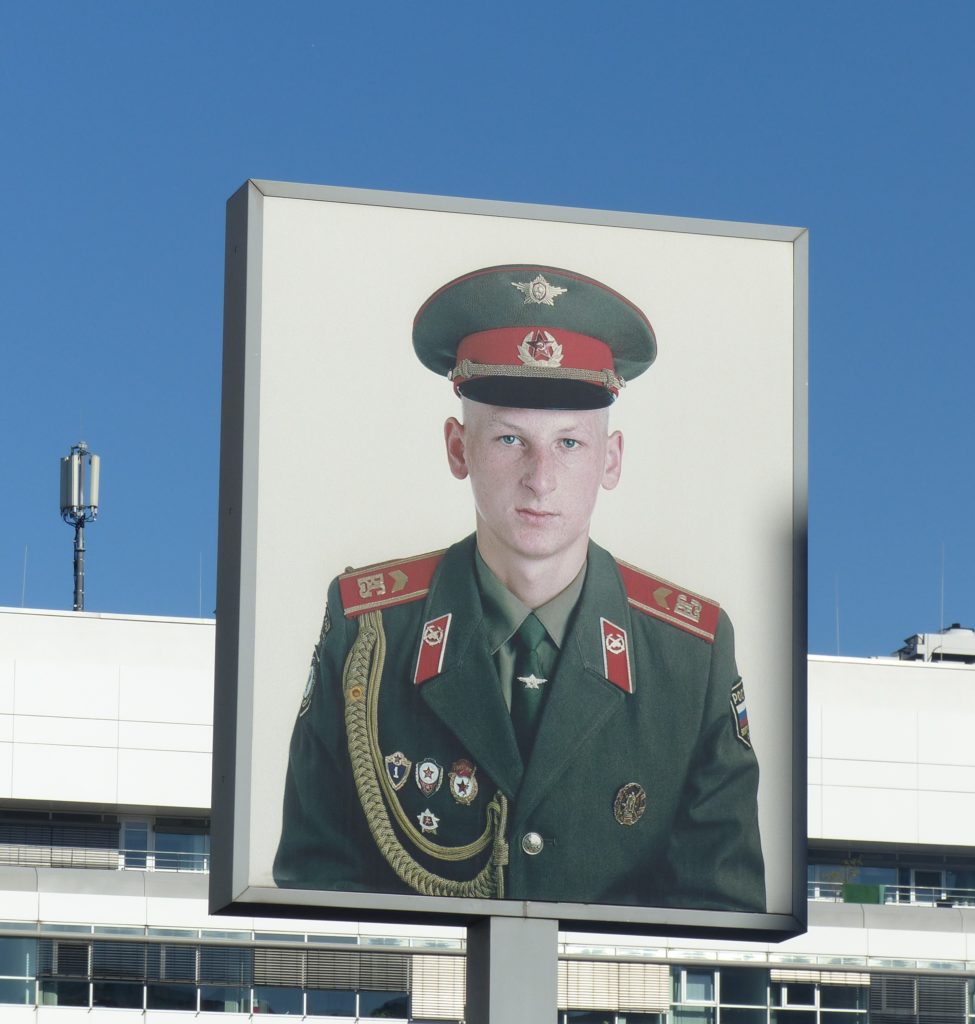
Asisi Panorama–Die Mauer (The Wall)
While in Berlin, I became fascinated by its recent Cold War past. You’ll find museums and memorials commemorating the Cold War throughout Berlin, including the DDR Museum mentioned earlier.
I enjoyed the Asisi Panorama: Die Mauer (The Wall), located across the street from Checkpoint Charlie. The Panorama is a multi-storey immersive experience created by artist Yadegar Asisi in which you step back in time to 1980s Berlin and peer over the Wall from West Berlin into East Berlin.
Climb a set of stairs in front of a massive curved screen. You are five meters back and four meters up on the western side of the Berlin Wall, watching a day unfold over the course of 24 hours.
Sophisticated lighting effects cycle through changes from day to night every half hour or so in the shadow of the guard towers. You experience the contrast between the lively streets and graffiti-daubed wall on the West Berlin side and the drabness and aura of danger of East Berlin.
I was riveted–and fascinated that the scenes depicted on-screen in East Berlin happened a relatively short time ago.
The Berlin Wall existed for almost thirty years of my lifetime, and yet now when you walk around Berlin, you often have no idea when you’re in the former East Berlin. Your only clues are the pedestrian crossing signals (Ampelmänn!) and the stark utilitarian facades of some of the government buildings. Thirty years of unification have blurred the divisions, and pretty much everyone under the age of 35 has little or no memory of the Cold-War past.
Buy tickets in advance to avoid line-ups.
The Jewish Museum Berlin
Housed in a spectacular modern building, the Jewish Museum Berlin is a must-see. The museum chronicles Jewish history and culture in Germany from the Middle Ages to the present day.
The building itself adds to the compelling visitor experience, with its bold zigzag design and occasional empty spaces (called voids) that stretch the full height of the building and symbolize the cultural loss caused by the Holocaust.
In one space, metal discs representing upturned faces make weirdly disturbing sounds as you walk across them. The effect underscores the dehumanization of the Holocaust.
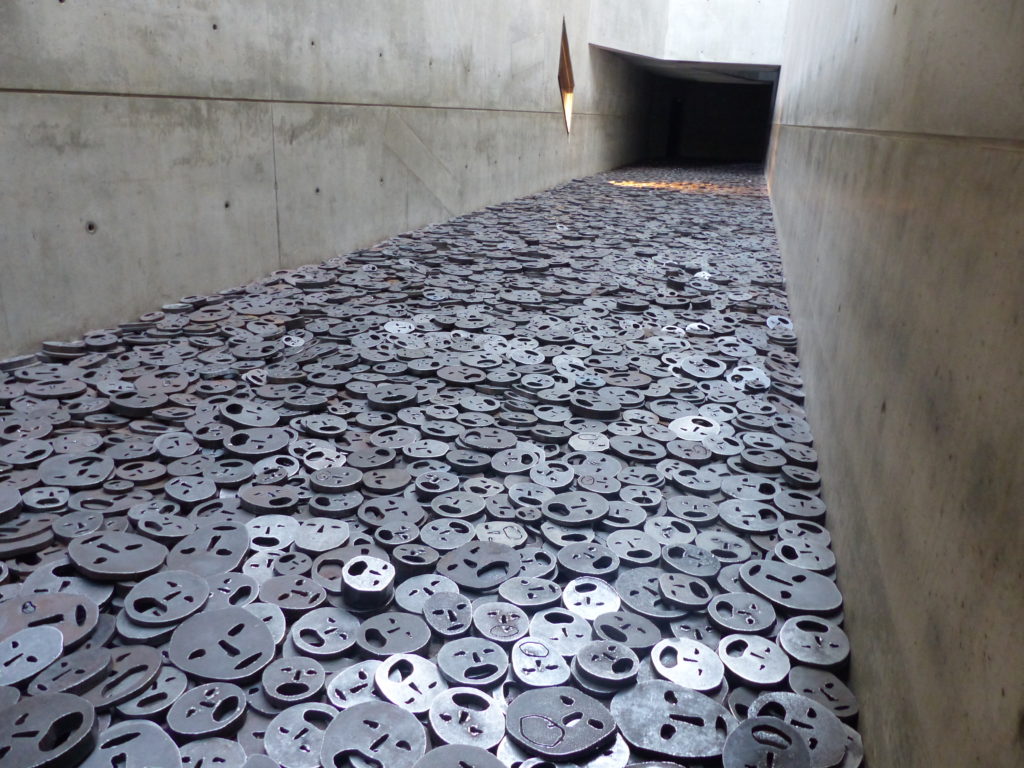
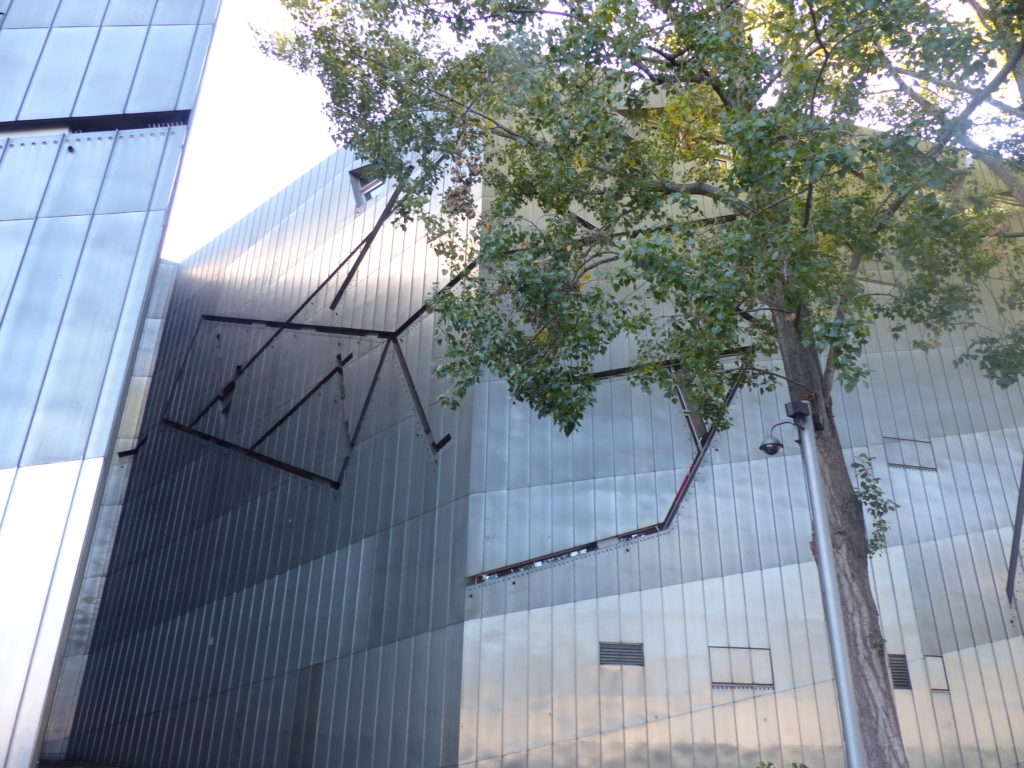
Stumble Stones (Stolpersteine)
As you walk around Berlin, particularly in the old Jewish quarter north of Museum Island, you’ll come across slightly raised stones set into the sidewalk and polished by the thousands of feet that have walked over them.
Called stumbling stones, each 10-square-centimeter polished brass square is inscribed with the name of an individual or family that once lived in the building you’re passing.
The inscription on each stone begins “Here lived”, followed by the victim’s name, date of birth, and fate: internment, suicide, exile or, most often, deportation and murder.
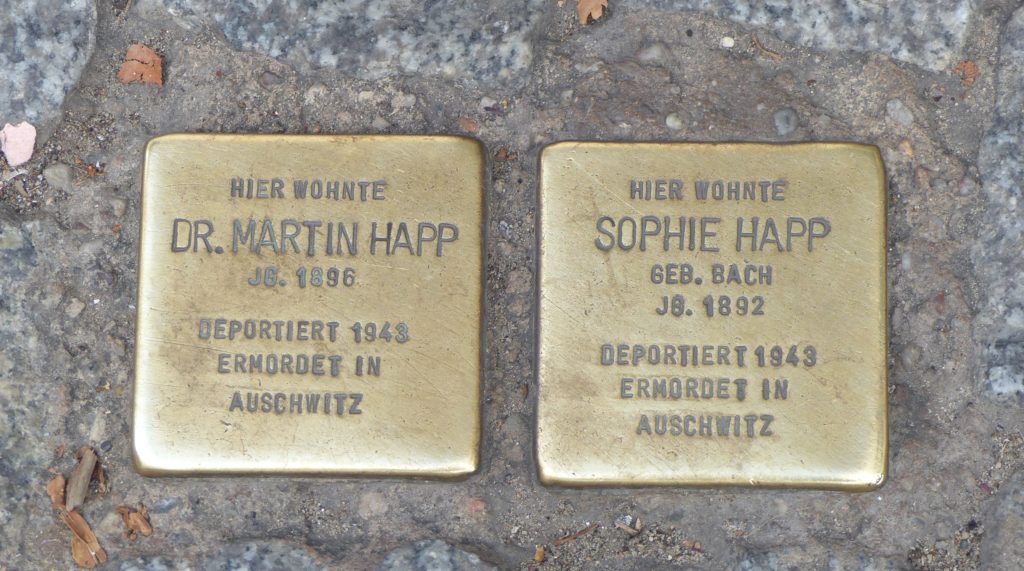
Over 70,000 stumble stones are laid in sidewalks in more than 1,200 cities and towns across Europe and Russia.
I wanted to stop and read each one as we walked along the streets, but there were so many, it was heart wrenching. The stumble stones have been controversial, but I found them to be moving tributes to people who were going about their daily lives until ensnared by the horrors of fascism.
According to the Guardian, despite their international scope, the Stolpersteine are a grassroots initiative. Local groups – often residents of a street, or schoolchildren working on a project – unite to research the biographies of local victims and to raise the €120 it costs to install each stone.
Museum Pass
I recommend purchasing the three-day Museum Pass Berlin. At €29, the pass gets you into 30+ museums in Berlin, including the five Museum Island museums, the German History Museum, the Jewish History Museum, the Gemäldegalerie, and other museums in the Kulturforum area.
Considering admission to each museum on Museum Island costs €10, a Museum Pass makes sense.
The €18 Museum Island Pass saves you money if you tour two or more of the Museum Island museums on one day.
More Berlin
Even after spending a week in Berlin, I hadn’t seen everything I wanted to. Depending on your interests, you’ll find many more museums, lively nightlife, and interesting neighborhoods to wander through.
Although we stayed in the Kreuzberg area in south Berlin, I recommend the trendier and more interesting Prenzlauer Berg in north Berlin. We enjoyed dining out in this area that features older buildings, lots of cool restaurants, and a youthful, neighborhood vibe.
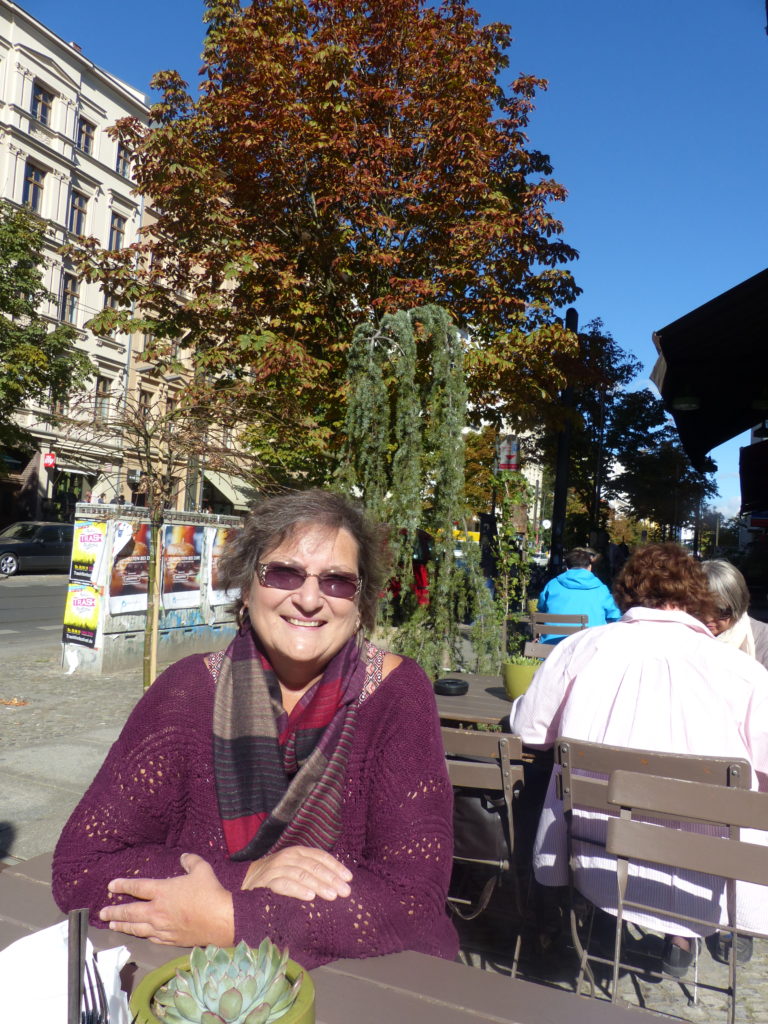
Where to Stay in Berlin
For accommodation suggestions in Berlin, see Where to Stay in Germany: My Best Picks.
Have you been to Berlin? Please share your experiences and tips with other artsy travelers in the Comments section below.
Here are more posts about Germany on Artsy Traveler:
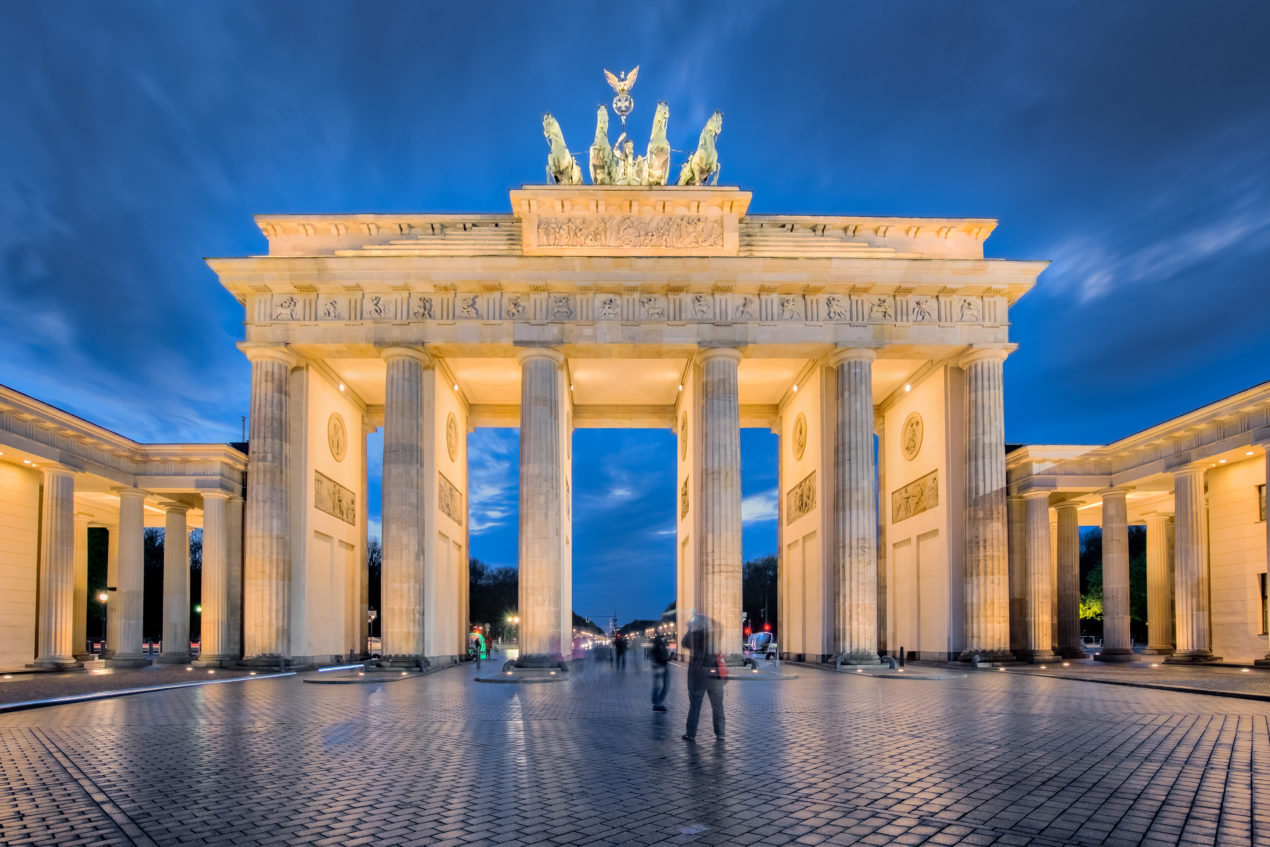



[…] Berlin […]
[…] Berlin […]